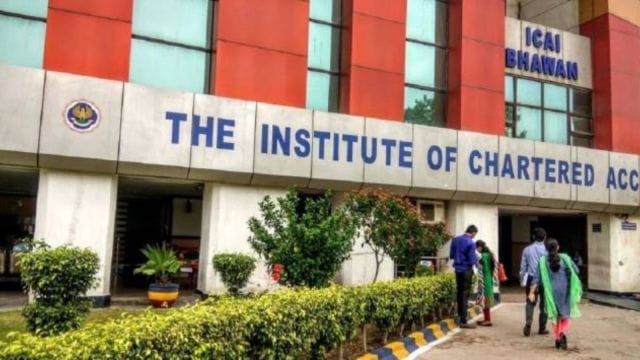
UPSC Essentials | Daily subject-wise quiz : Environment, Geography, Sci-Tech MCQs on NISAR satellite, Quasars and more (Week 84)Sign In to read
UPSC Essentials brings to you its initiative of subject-wise quizzes. These quizzes are designed to help you revise some of the most important topics from the static part of the syllabus. Attempt today’s subject quiz on Environment, Geography, Science and Technology to check your progress. Come back tomorrow to solve the Economy Quiz.
With reference to the NISAR satellite, consider the following statements:
1. This satellite is developed by the Indian Space and Research Organisation in partnership with NASA.
2. It will measure the motion of the entire planet’s land and ice-covered surface every 28 days.
3. The satellite will work only during the daytime.
4. The satellite will be able to predict earthquakes.
How many of the statements given above are correct?
(a) Only one
(b) Only two
(c) Only three
(d) All four
Explanation
— The Indian Space and Research Organisation (ISRO) is preparing to launch a satellite that will help us track Earth’s “surface motions down to fractions of an inch.”
— NISAR Satellite is developed in partnership with NASA, the new satellite dubbed NISAR (NASA-ISRO Synthetic Aperture Radar) will help humans track the motion of glaciers, ice sheets, and sea ice and map the changes to the planet’s vegetation. Hence, statement 1 is correct.
— According to NASA’s Jet Propulsion Laboratory, NISAR will measure the motion of the entire planet’s land and ice-covered surface once every 12 days, providing researchers with a better understanding of how our planet’s surface changes over time. Hence, statement 2 is not correct.
— The US Space Agency says these instruments enable the satellite to collect measurements during both day and night and can even see through clouds using the L-band, which can even penetrate dense vegetation to measure the motion of the ground. Hence, statement 3 is not correct.
— This level of accuracy is reached by employing a pair of radars, consisting of L-band and S-band systems developed by NASA and ISRO, respectively.
— While NISAR will not be able to anticipate earthquakes, it will assist us in identifying the locations most vulnerable to them. Hence, statement 4 is not correct.
— For volcano researchers, NISAR will aid in the detection of land movements before the eruption and will provide a more complete picture of why volcanoes deform and whether these deformations indicate an eruption.
Therefore, option (a) is the correct answer.
With reference to the Quasars, consider the following statements:
1. Quasars are the extremely active and bright cores of some distant galaxies.
2. Quasars can be seen with an unaided eye.
3. They drown out the light from all the other stars in the same galaxy.
Which of the statements given above is/are correct?
(a) 1 and 2 only
(b) 3 only
(c) 1 and 3 only
(d) 1 only
Explanation
— The European Southern Observatory announced the characterisation of an extremely bright quasar that is not only the brightest of its kind but also the most luminous object ever observed in space.
— Quasars are the extremely active and bright cores of some distant galaxies and are powered by supermassive black holes. Supermassive black holes grow by consuming matter that is sucked in by their immensely strong gravity. Hence, statement 1 is correct.
— Quasars emit massive amounts of energy; they can be a trillion times brighter than the Sun. Quasars are thought to derive their energy from gigantic black holes in the centres of the galaxies in which they are located. Quasars are so luminous that they drown out the light from the rest of the galaxy. Hence, statement 3 is correct.
— Despite their brightness, because of their immense distance from Earth, no quasars can be viewed with the naked eye. Hence, statement 2 is not correct.
— The energy from quasars takes billions of years to reach Earth’s atmosphere. As a result, studying quasars can help scientists learn about the universe’s early beginnings.
Therefore, option (c) is the correct answer.
(Other Source: starchild.gsfc.nasa.gov)
With reference to the PM E-DRIVE, consider the following statements:
1. This scheme is for the promotion of electric vehicles (EVs) in India and will replace the Faster Adoption and Manufacturing of Electric Vehicles in India Phase II.
2. The new scheme does not offer subsidies/demand incentives.
Which of the statements given above is/are correct?
(a) 1 only
(b) 2 only
(c) Both 1 and 2
(d) Neither 1 nor 2
Explanation
— The Union Cabinet approved a new scheme called PM Electric Drive Revolution in Innovative Vehicle Enhancement (PM E-DRIVE) for the promotion of electric vehicles (EV) in India.
— The PM E-DRIVE will replace Faster Adoption and Manufacturing of Electric Vehicles in India Phase II (FAME India Phase II). Hence, statement 1 is correct.
— The new scheme offers subsidies/demand incentives worth Rs 3,679 crore to incentivise the adoption of electric two-wheelers, electric three-wheelers, e-ambulances, e-trucks and other emerging EVs. Hence, statement 2 is not correct.
— The government said that the primary objective of the PM E-DRIVE scheme is to expedite the adoption of EVs by providing upfront incentives for their purchase, as well as by facilitating the establishment of essential charging infrastructure for EVs.
Therefore, option (a) is the correct answer.
Which of the following statements is not correct about mangroves?
(a) They require carbon dioxide for their roots to survive.
(b) They are commonly found in tropical places.
(c) They prevent erosion by absorbing wave action.
(d) They act as a buffer between the ocean and the land.
Explanation
— Mangroves, marshes, and sandy coral islands form in the low-lying areas flooded and drained by tides.
— Mangroves are commonly found in tropical places such as Southeast Asia, northern Australia, Equatorial Africa, and the low-latitude Americas.
— Both mangroves and tidal marshes serve as a buffer between the ocean and land.
— They contribute significantly to erosion prevention by absorbing wave movement. They are also important hotspots of biodiversity.
— Mangroves and other tidal plants require oxygen at their roots to survive. They acquire it when the tide is low and the water drains away. When plants become soggy owing to global warming, they begin to die.
— The Pichavaram mangrove forest, comprising 1,100 hectares, is located in Tamil Nadu’s Cuddalore district.
— In 2022, Pichavaram mangroves were given the status of a Ramsar site, i.e., Ramsar wetlands of international importance. However, in the wake of climate change, the Pichavaram mangrove ecosystem has become susceptible and vulnerable to ecological damage.
Therefore, option (a) is the correct answer.
Consider the following:
1. Rich polymetallic nodules
2. Sulphide deposits
3. Cobalt crusts from rock
How many of the above are associated with deep-sea mining?
(a) Only one
(b) Only two
(c) All three
(d) None
Explanation
— Deep Sea Mining involves removing mineral deposits and metals from the ocean’s seabed.
— There are three types of such mining: taking deposit-rich polymetallic nodules off the ocean floor, mining massive seafloor sulphide deposits and stripping cobalt crusts from rock.
— These nodules, deposits and crusts contain materials, such as nickel, rare earths, cobalt and more, that are needed for batteries and other materials used in tapping renewable energy and also for everyday technology like cellphones and computers.
— Countries manage their own maritime territory and exclusive economic zones, while the high seas and the international ocean floor are governed by the United Nations Convention on the Law of the Seas.
— It is regarded to apply to all states, whether or not they have signed or ratified it.
— According to the treaty, the seabed and its mineral riches are considered the “common heritage of mankind” and must be handled in a way that protects humanity’s interests by sharing economic benefits, funding marine scientific research, and protecting marine environments.
Therefore, option (c) is the correct answer.
Daily subject-wise quiz — Polity and Governance (Week 84)
Daily Subject-wise quiz — History, Culture, and Social Issues (Week 84)
Daily subject-wise quiz — Environment, Geography, Science and Technology (Week 83)
Daily subject-wise quiz — Economy (Week 83)
Daily subject-wise quiz – International Relations (Week 83)
Subscribe to our UPSC newsletter and stay updated with the news cues from the past week.
Stay updated with the latest UPSC articles by joining our Telegram channel – IndianExpress UPSC Hub, and follow us on Instagram and X.

 Posts
Posts Sign up as a Teacher
Sign up as a Teacher







